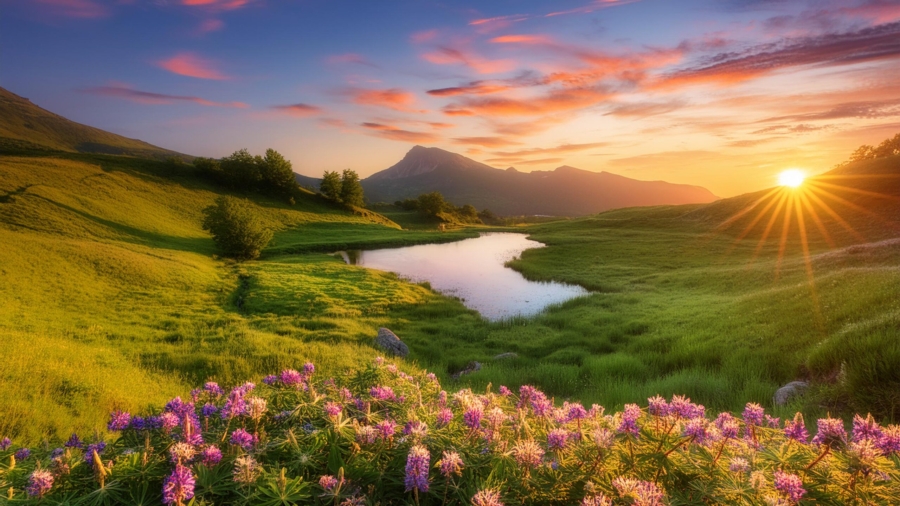Fine art photography is an artistic genre that goes beyond capturing reality, aiming to evoke emotions, convey messages, and create visually striking images. Unlike traditional photography, fine art photography is not just about documenting a moment but transforming it into an extraordinary visual experience.
Table of Contents
What Defines Fine Art Photography?
Fine art photography is characterized by its emphasis on creativity and expression. Photographers in this genre use their artistic vision to interpret scenes in unique ways, often employing techniques like long exposure, selective focus, and creative lighting. This style is not bound by the rules of conventional photography; instead, it embraces innovation and imagination.
Techniques in Fine Art Photography
- Composition: Mastering composition is crucial in fine art photography. The rule of thirds, leading lines, and symmetry are some techniques that can enhance the visual appeal of an image.
- Lighting: Lighting plays a significant role in setting the mood. Fine art photographers often experiment with natural light, shadows, and artificial lighting to create dramatic effects.
- Post-Processing: Editing software like Adobe Photoshop and Lightroom are essential tools. Fine art photographers use these programs to enhance colors, contrast, and textures, often creating surreal and dreamlike images.
- Camera Settings: Understanding and manipulating camera settings, such as aperture, shutter speed, and ISO, allows photographers to capture images that align with their artistic vision.
The Evolution of Fine Art Photography
Fine art photography has evolved significantly over the years. In the early 20th century, pioneers like Ansel Adams and Edward Weston set the foundation with their black-and-white landscapes and still lifes. Today, digital technology has expanded the possibilities, allowing contemporary artists to push the boundaries even further.
Fine Art Photography Genres
- Landscape Photography: This genre captures the beauty of natural scenery, from majestic mountains to serene beaches. Fine art landscape photographers often use techniques like long exposure to create ethereal effects.
- Portrait Photography: Fine art portraits go beyond capturing a person’s likeness. They delve into the subject’s emotions and personality, often using creative backdrops and lighting.
- Abstract Photography: This genre focuses on shapes, colors, and textures, often creating images that are open to interpretation. Abstract fine art photography challenges viewers to see the world in new ways.
- Conceptual Photography: Conceptual photographers convey ideas and stories through their images. These photos often involve staged scenes and symbolic elements.
Tips for Aspiring Fine Art Photographers
- Develop Your Style: Experiment with different techniques and subjects to find your unique voice in fine art photography.
- Study Other Artists: Analyze the works of established fine art photographers to understand their approach and draw inspiration.
- Practice Regularly: Like any art form, fine art photography requires consistent practice. Keep shooting and refining your skills.
- Learn Post-Processing: Mastering editing software is crucial for fine art photography. Take courses or watch tutorials to improve your post-processing skills.
- Showcase Your Work: Create an online portfolio and participate in exhibitions to get your work noticed.
FAQs about Fine Art Photography
Q: What equipment do I need for fine art photography?
A: A good quality DSLR or mirrorless camera, a selection of lenses, a tripod, and editing software are essential for fine art photography.
Q: Can I make a living as a fine art photographer?
A: Yes, many photographers make a living through gallery sales, online prints, and commissioned work. Building a strong portfolio and marketing your work are key.
Q: Do I need formal training to become a fine art photographer?
A: While formal training can be beneficial, many successful fine art photographers are self-taught. What matters most is your creativity and dedication to the craft.
Q: How do I price my fine art photography?
A: Pricing depends on factors like the size of the print, the exclusivity of the image, and your reputation. Research the market and consider your costs when setting prices.
Q: What are some common mistakes to avoid in fine art photography?
A: Common mistakes include over-editing, ignoring composition rules, and not having a clear artistic vision. Always strive for balance and coherence in your work.
Conclusion
Fine art photography is a captivating and diverse field that allows photographers to express their artistic vision and creativity. Whether you are drawn to landscapes, portraits, abstract, or conceptual photography, there is a place for you in this art form. By mastering techniques, developing your style, and continually practicing, you can create stunning images that resonate with viewers and stand the test of time.


Add a Comment